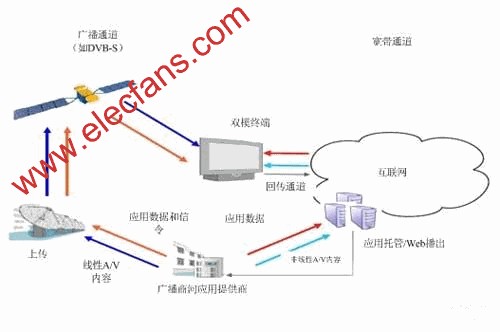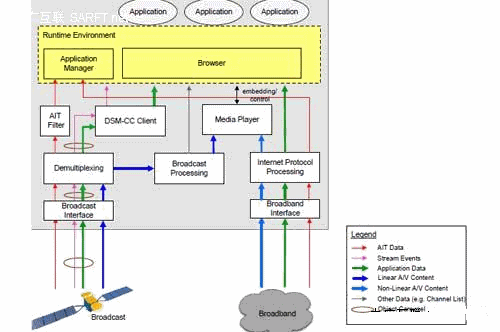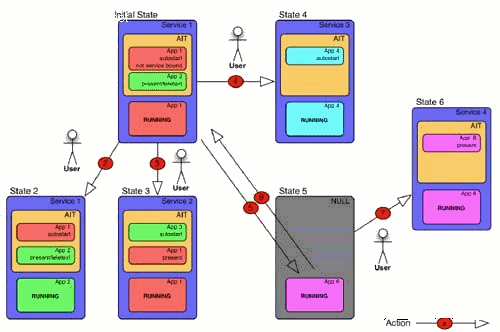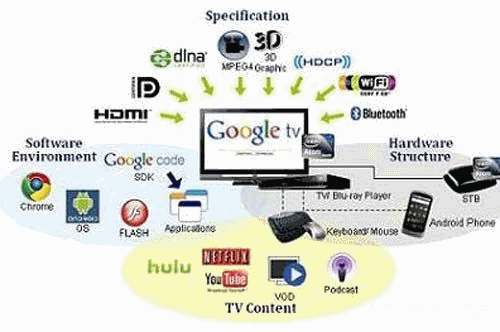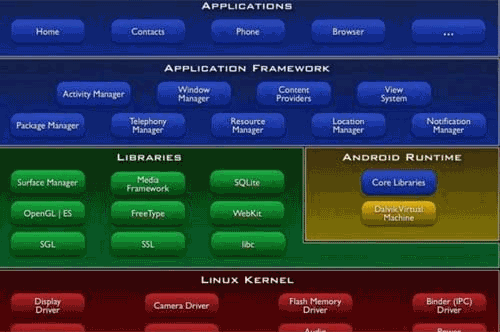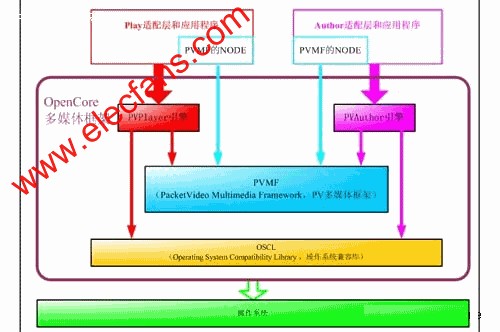1 Introduction Since the digital TV was put into operation in 1995, the middleware business platform has been the subject of research and discussion. The digital TV operator represented by Europe has always believed that the development of digital TV value-added services is the ultimate goal of its development. Digital TV requires a middleware platform, which requires limited compatibility and wall-based management of Internet applications (Walled Garden). . This is a view that moves from "television" to "internet (or computer)." According to the Americans, the digital TV receiving device is an Internet terminal. By embedding browser software and running web browsing, digital TV entertainment can be realized. This is a view that moves from "Internet (or computer)" to "TV." It can be seen that Europeans are considering how to develop value-added services from digital TV operations and gain revenue. Americans are more actively seeking to interconnect home devices and let the rich content of the Internet enter the living room of the family. terminal. Different ideas produce different technical routes. Therefore, the middleware platform standard, MHP (Media Home Platform), which is based on the standard middleware platform architecture, access protocol and application development, was born in Europe. The efforts of Americans to implant the Internet into digital TV set-top boxes have never been interrupted. The ATVEF (Advanced Television Enhancement Forum) in the United States released an interactive HTML-based application specification as early as 1999. Microsoft has launched WebTV since 1998. Until recently, Mediaroom has spent huge financial and material resources for Microsoft operating systems to enter consumer electronics. People in the industry may not forget the Venus program. The United States has also produced Liberate, a well-known digital TV browser technology company. Various middleware platforms targeting value-added services and different middleware specifications based on MHP (such as OCAP of the American Cable Alliance, DTVM of China Standards, ARIB of Japan, Ginga-J of Brazil, etc.), and many other intermediates The business platform plays a role in the operation of different digital TV operators around the world; and the effort to move the Internet to TV is very difficult: the ATVEF standard is largely forgotten, Microsoft's WebTV platform and Venus plan Endless, Liberate has long since declared bankruptcy. In 2006, Apple introduced AppleTV. Its beautiful design and good user experience have been loved by many people. However, the real market effect is not ideal. Until now, there is no commercial market deployment. However, the continuous development of Internet technology and network broadband, and the increasing content of information and video content, especially in recent years, social networks, cloud computing concepts and systems, mobile Internet, etc., make "television" and "Internet" Integration has become an unstoppable trend. However, how do the two meet each other, Europeans and Americans have different understandings: Europe's digital TV industry has launched a dual-mode business system based on the middleware platform compatible with the Internet (broadband) - HbbTV; While Americans continue to work hard on the Internet browser architecture, on the basis of the success of its Android system in the mobile field (mobile phone), Google has pushed it to the digital TV field and formed GoogleTV. At present, there is a view that due to the free opening of its source code, GoogleTV will quickly replace the middleware system and become a unified business platform. This paper attempts to illustrate the development prospects of these two systems from the perspective of technology and operator business needs. The views of this article are purely personal and welcome the industry colleagues to criticize and correct. 2 Technical characteristics of HbbTV and GoogleTV platform 2.1 Technical introduction of HbbTV platform HbbTV (Hybrid BroADCast and Broadband Television) evolved and developed on the basis of the MHP standard platform. Strictly speaking, the MHP standard also defines support for Internet protocols (TCP/IP, HTTP, etc.), but most of the standard specifications are only for application download and management, application lifecycle management, application programming interfaces, etc. for broadcast environments. Detailed regulations have been made, and the definition of development and management of applications using Internet technologies (HTML, JavaScript, etc.) is not specific. HbbTV makes up for the shortcomings of these aspects of the MHP middleware platform, and elaborates how the Internet technology is coordinated with the broadcast channel. The ETSI standard submitted by DVB (ETSI 102 796 V1.1.1 2009-12 and ETSI 102 809 V1.1.1 2010-01) provides a clear specification of HbbTV's technical architecture and application management. 2.1.1 Architecture and Function of HbbTV Platform HbbTV defines a dual-mode terminal (Hybrid Terminal) that can be connected to a broadcast television network when there is no broadband connection, so as to continuously receive audio and video programs and related applications, and also support both broadcast and broadband networks. Connection. The figure below shows the channel source for HbbTV's services (applications, videos, etc.). Pictured: Channel source of HbbTV service The following figure depicts the HbbTV system architecture and main functional components. The functions of the main components are briefly explained later in the figure. Pictured: Schematic diagram of the functional components of the dual-mode terminal software system Through the broadcast channel (BroADCast InteRFace), the dual mode terminal receives AIT data, linear audio and video programs, application data and stream events. The latter two data are transmitted using the DSM-CC Object Carousel protocol. Therefore, the DSM-CC Client (DSM-CC Client) needs to be embedded to receive data transfer to the RunTIme Environment. The runtime environment can be seen as a very abstract component that executes the application and display interface. The Browser and ApplicaTIon Manager are part of the application's runtime environment. The application manager parses the AIT data to control the lifecycle of the application; the browser executes and renders the application. Linear audio and video content is handled exactly the same as broadcast TV terminals (or terminals that only support satellite, terrestrial or cable digital TV), and all DVB-related functions are fully supported (eg channel list, EIT information processing, selection of services and FM, etc., is handled by the Broadcast Processing component, and playback of media content such as audio and video is handled by the Media Player component. Through the Broadband Interface, dual-mode terminals can connect to the Internet or other IP networks. It provides a second channel for application data reception to connect to the application provider's server. This connection is used to receive non-linear audio and video content (such as content on demand services). The Internet Protocol Processing component contains functions for processing IP network data originating from the Internet. Through this component, application data is provided to the operating environment, and non-linear audio and video content is transmitted to the Media Player (Media Player), including Parse, render, and play in the app. 2.1.2 Business and Application Model of HbbTV Platform HbbTV supports two types of applications: 1) broadcast and television related applications, transmitted over broadcast television channels; 2) independent of broadcast television applications, which are not transmitted over broadcast television channels. Depending on the application's binding to the broadcast channel (Service) or the network connection, there are different application models as follows. The following are listed from simple to complex: An application that is only bound to one broadcast channel: when the channel is selected, the application is launched; when the channel is switched, the application is terminated; An application that is bound to multiple channels: when any of the channels is selected, the application is launched; when the channel is switched, the application is terminated, even if the new channel has the application bound to it; An application that keeps running during channel switching: This application is bound to multiple broadcast channels, the application is launched when any of the related channels are selected, and the application is not terminated when switching to a new channel that is also bound to the application Continue to run; the application terminates only if the application is no longer bound to it on the selected channel; An application that is bound to a portion of the content of the broadcast channel (eg, tied to a single program or advertising content): when the related content is launched, the application is launched; when the related content is terminated, the application is terminated; An application that is bound to the content of the on-demand: its control is either consistent with the application bound to the content of the broadcast channel, or remains valid throughout the on-demand process; applications connected to the network operator or to the service provider: In some deployments, this application connection can be permanent. The HbbTV standard specifies the life cycle management of the start and end of transmission applications through broadcast channels and broadband channels. The following figure shows the process of application lifecycle state transitions. Pictured: Application life cycle and state transition example End users can access the interactive app (InteracTIve ApplicaTIon) in the following ways: By launching a red button on the Autostart Application associated with a broadcast channel; Start a digital caption application (Digital Teletext Application) by TEXT button (TEXT Button); Launch a non-broadcast application set by the manufacturer via the Internet TV portal; By launching a hyperlink on the running app; By selecting a broadcast channel, there is a full-screen self-starting application. 2.1.3 Broadcast related self-starting application access Broadcast-related self-starting applications are typically associated with broadcast channels or programs and events on them, in which case the self-starting application should be launched immediately; in the second case, the following occurs: Display a red button (Red Button) indicating that an application can be launched; Do not display the user interface; Display a full screen (as in audio applications and data applications) In general, the self-starting application does not display full screen. When there is a red button indicating that there is an application, the user presses the red button (Red Button) to display the full screen; if there is no broadcast related self-starting application, pressing the red button (Red Button) will have no effect. Pictured: Red Button indicates that there is an application, press Red button to display the application in full screen. The figure above shows the broadcast-related self-starting application launched with the Red Button. 2.1.4 Access to non-broadcast related applications A non-broadcast-related application is an application that is transmitted independently and not through a broadcast channel. It is generally accessed through a TV portal (TV Portal), which is an application that provides a starting web page in which non-broadcasting is provided. The application is arranged and presented so that users can easily browse and access their settings and associated applications (non-broadcast related applications). Pictured: The launch of the Internet TV portal The exit of the application generally uses the Exit Button, or the way the application indicates. We can see that HbbTV defines a digital TV middleware technology architecture that supports both broadcast and broadband services. It can support the connection to two networks in parallel: on the one hand, it can connect to broadcast TV DVB networks (such as DVB). -T, DVB-S or DVB-C), through the broadcast television network, the dual-mode terminal can receive standard broadcast television programs, which is a linear way of audio and video content, application data and application signaling information; The dual-mode terminal can connect with the Internet (IP network) through broadband to support two-way communication with the application server. This method enables the terminal to receive non-linear audio and video content and application data, and can also download non-real-time audio and video content. 2.2 Technical introduction of the GoogleTV platform After making great success in the field of Internet search, Google is also trying to enter the consumer electronics field. The Android platform they developed heavily in the mobile phone field began to emerge, and then promoted it to the digital TV field. Below we focus on and discuss the GoogleTV design philosophy and technical framework. 2.2.1 The design concept of the GoogleTV platform Google TV is a conceptual TV platform that integrates computer systems, media playback and web applications. It is led by Google and is free and open source. The application of Google TV covers the following areas: Pictured: The concept of GoogleTV design As can be seen from the above figure, in terms of hardware, in addition to the diversified peripheral devices in the actual operating environment, Google TV also has many requirements in terms of specifications; in terms of software, GoogleTV adds its search engine and Android system. In the platform of GoogleTV; in the application provision, developed in cooperation with content providers, in order to have a broad application and business development community, form an Android app store. 2.2.2 Technical Architecture of the GoogleTV Platform The core software system of GoogleTV is the Android platform, and its architecture is shown in the following diagram. Pictured: GoogleTV software core Android architecture Android is a modular and hierarchical architecture design, which is also a common design concept and architectural model for platform software design. Android has five main levels: 1) Application layer Android will be released with the same set of core application packages, which are written in the email client and in the SMS language. Short message programs, calendars, maps, browsers, contact management programs, and more. Java can be used by all applications 2) Application framework layer Developers can also access the API framework used by the core application. The application's architectural design simplifies component reuse; any application can publish its function blocks and any other application can use its published function blocks (in fact, the software together is difficult to control without being controlled) Called). Similarly, the application reuse mechanism also allows users to easily replace program components. Hidden behind each application is a series of services and systems, including; Scalable views (Views) that can be used to build applications, including lists, grids, text boxes, buttons, and even embeddable web browsers; A Content Provider allows an application to access data from another application (such as a contact database) or share their own data; The Resource Manager provides access to non-code resources such as local strings, graphics, and layout files; The Notification Manager (NoTIfication Manager) allows the application to display custom prompts in the status bar; Activity Manager is used to manage the application life cycle and provide common navigation fallback capabilities. 3) Library layer Android includes some C/C++ libraries that can be used by different components in the Android system. They serve developers through the Android application framework. Here are some core libraries: System C library: A standard C system function library (libc) inherited from BSD, which is optimized for embedded Linux-based devices; Media Library: Based on PacketVideo/OpenCORE. The library supports a variety of commonly used audio and video formats for playback and recording, as well as support for still image files. Supported encoding formats include MPEG-4, H.264, MP3, AAC, AMR, JPG, PNG, etc. Display Manager (SuRFace Manager): Manages the display subsystem and provides seamless integration of 2D and 3D layers for multiple applications; Browser Engine (LibWebCore): The latest web browser engine for Android browsers and embeddable web views; Graphical Engine (SGL): the underlying 2D graphics engine; 3D libraries: based on OpenGL ES 1.0 APIs; the library can use hardware 3D acceleration (if available) or use highly optimized 3D soft acceleration; Font Engine (FreeType): bitmap (Bitmap) and vector (Vector) font display; SQLite: A lightweight, relational database engine that is available for all applications. 4) Android runtime library (RunTIme libraries) Most of the features of the programming language core library. Android includes a core library that provides Java Each Android application runs in its own process and has a separate Dalvik VM instance. Dalvik is designed to run multiple virtual systems efficiently and efficiently at the same time. The virtual machine of the program, its executable file (Dalvik Dalvik virtual machine is developed by Google company to explain the execution of Java executable compiler compilation, and then through the SDK? format) format file (.dex) optimized for small memory usage. . At the same time, the Dalvik virtual machine is register-based, and all classes are converted to ".dex" format by the virtual machine via the "dx" tool in Java. The Dalvik virtual machine relies on some features of the Linux kernel, such as the threading mechanism and the underlying memory management mechanism. 5) Linux kernel Android's core system services rely on the Linux 2.6 kernel, such as security, memory management, process management, network protocol stacks, and driver models. The Linux kernel also acts as an abstraction layer between the hardware and software stacks. The architecture of the Android media library system OpenCORE is shown below: Pictured: The composition of the Android media library software OpenCore's code is very large. It is based on the implementation of C++. It defines a full-featured operating system porting layer. All the basic functions are encapsulated into a class. The interfaces between the layers are inherited. . In Android 2.1 and previous versions, JIT is not supported. At the Google I/O conference on May 21, 2010, Google released the Android 2.2 release. The main new features include: Support JIT, performance has also improved; Support Adobe Flash 10.1 and AIR (Apollo Integrated Runtime) technology; Support for new API applications, such as voice recognition, to quickly turn words into text messages, search for data, and even launch Google Maps; There is also a considerable degree of support in enterprise applications, such as Microsoft's Exchange, Security Policies and GAL lookup (full address search), etc., to facilitate the use of instant messaging and fast delivery of content. 2.3 Comparative analysis of HbbTV and GoogleTV platforms From the above analysis, we can see that HbbTV is an extension of the MHP mode middleware platform to the Internet (IP-based network), and its detailed protocol specification based on IP network channel application management can effectively apply the broadcast channel. Management is integrated, making the HbbTV platform (simply the middleware platform) support DVB and IP multimedia applications. GoogleTV's technology platform integrates Linux-based open software packages and uses open source media players to play audio and video streaming media. In GoogleTV's core Android system, there is no digital TV protocol supporting broadcast channel (DVB-C/S/T) (at least so far), so it cannot be used by digital TV operators to carry out value-added services. of. This can be said to be an important flaw in the current GoogleTV platform. In general, the digital TV middleware platform (even based on the MHP specification) is independent of the operating system (RTOS) of the platform. For example, the file system in the middleware system, the TCP/IP protocol stack, etc. can be ported to In different systems, the middleware-based business platform has much lower requirements for the system's memory and storage (such as Flash); while the Android system is based on Linux, although the real-time Linux operating system has many optimizations. But each application needs to run in a different process, and the storage it needs is still much larger than the standard middleware platform. In particular, the graphics and image processing module, media player module, and browser engine in the Android system are all integrated by Google from other open source code, and are a combination and hodgepodge of a GPL software package. The execution of the program: Dalvik language to write the application, DalvikVM uses a different bytecode format than JavaVM and Java is optimized with the execution of Java programs. However, the performance of the Dalvik virtual machine is improved compared to the traditional Java virtual machine, and no data has been given by the authority. Before the Android 2.1 version, Google claimed that its performance is excellent, no need for JIT (Just-In-Time) technology, but in the recently released Android2.2, JIT technology is still adopted. Intellectual property issues, of course, are also register-based for Java® VM; JavaVM is stack-based. The purpose of this move is to avoid Sun's Java. The HbbTV-based middleware platform is developed and provided by different technology vendors. In compliance with standard specifications (HbbTV, MHP or other proprietary middleware specifications), the functions required by operators can be added to suit individuality. Application needs for interactivity and interactivity; GoogleTV uses an open source package and is free. This has become an important reason why many terminal manufacturers are eagerly awaiting. 3. Requirements for middleware technology platform for digital TV operation Today, with the convergence of network functions and service convergence, digital TV operations have undergone great changes. Services and multimedia terminals that deliver video over broadband networks and IP-based protocols have emerged in large numbers. On-demand, time-shifting, and recording on an IP network are common functions, and the application itself and its data are already mixed and indistinguishable. Due to the large amount of information and timeliness requirements, these applications are increasingly being displayed in the form of HTML web pages, downloaded as needed, or related information is automatically updated through protocols such as Ajax and RSS. For operators, digital TV data services may originate from broadcast channels (satellite, cable or wireless, etc.) and/or broadband channels (internet, or other IP channels). Audio, video and data can be indiscriminately These two channels are respectively connected. In the case of bandwidth limitation, the broadcast channel can be used to broadcast high-definition programs, and the use of broadband can be widely used, such as video on demand, time shift, information browsing, e-commerce, and the like. Operators' demand for digital TV is to provide value-added services and interactive applications by providing audio and video content, entertainment information, and so on. Therefore, operators need a “closed†environment that can be fully controlled to form a “Walled Gardenâ€, which will bring audio and video programs, entertainment information, value-added services and applications to the operator-controlled platform to provide users with And monitor the operation of all businesses. At the same time, operators need to be able to have open systems, allowing end users to access open Internet information, and even access Internet audio and video content, such as YouTube, Youku, Tudou and other video sites. Of course, from a content security perspective, these Internet content needs to be filtered and monitored on the server side. At the same time, operators need a stable and reliable middleware business platform, which is updated and improved according to the development of the market and business. They need professional middleware platform technology vendors to provide targeted and professional services, which is bound to be The middleware platform is gradually personalized and customized according to the needs of operators. Even the middleware based on the HbbTV platform will display the features of the operator's brand in different operators' markets, which will promote the operators. In the fierce competition, we constantly introduce new products, develop users, and win competition. The digital TV industry is undergoing profound changes, and multimedia video services are constantly emerging through multiple channels. From the perspective of ordinary people, it is enough to passively watch TV in the past. Nowadays, more and more interactive content is needed, such as providing value-added services when sports events are broadcast. The more the audience demands the benefits of digital means. The more you send, the text messages, emails, and weather forecasts can be moved to the TV screen. In addition, there are some personalized community services and social TV. 4. Who will win the future technology platform? From a business perspective, digital TV has two types of markets: the operator market and the retail market. Digital TV operators (including broadcasters and telecom operators) need to operate and develop, create users and increase revenue in their “closed†network (Walled Garden). In a closed network, operators can enrich their services and provide application content and quality of service that are unmatched by an open Internet. The HbbTV-based middleware converged service platform can meet the needs of operators to adopt broadcast and/or broadband channels for value-added services, and can also support operators to manage and control applications. Therefore, the HbbTV middleware platform can meet the needs of operators and will become an indispensable business operation platform for operators. From a technical point of view, GoogleTV does not deviate from Microsoft's WebTV, Apple's AppleTV framework and functions, is another effort of WebTV or AppleTV on Internet TV, is the technology of Internet technology transplanted to streaming video processing The continuation of ideas. There is no doubt that using it to browse the content of Hulu, YouTube and other video sites and online news is no problem, but for digital TV operators with a large coverage of cable TV, satellite TV and/or IPTV TV users, We believe that it is not convenient for value-added business operations. GoogleTV has caused widespread concern in the industry. The main reason is that Google will open its source code to the Android platform, allowing the source code of the porting layer of Android on the terminal to be owned by each manufacturer (the manufacturers themselves transplant). We believe that the GoogleTV platform may be suitable for digital TV manufacturers to port it to the terminal devices of the retail market to support the playback and browsing of Internet streaming media, and to increase the functionality and selling point of its terminal devices. It is impossible for the operator market to use the intact GoogleTV platform. Even if manufacturers use the GoogleTV system in the carrier market, they also need to spend a lot of energy to transform the original Android system and increase the functions that operators need. That way, it will not become a GoogleTV platform, but only open source code is used by technology vendors, just like other open source code (such as WebKit, OpenGL, etc.). In short, Google has completely open source code for the GoogleTV platform. Its essential purpose is to enable GoogleTV terminals to access their Android app store. They gain benefits through this app store, not really for the digital TV industry to have a universally applicable technology platform. There is no interest consideration. In any case, GoogleTV is another attempt to integrate the Internet field into the digital TV field. It provides a reference for software systems for home appliance manufacturers' terminal development, and will definitely have a profound impact on the future development of digital TV and Internet video streaming services. Grow Light Reflector,Outdoor Grow Light Reflector,Outdoor Lamp Cover,Grow Light Lamp Cover Yangzhou Huadong Can Illuminations Mould Manufactory Co., Ltd. , http://www.light-reflectors.com